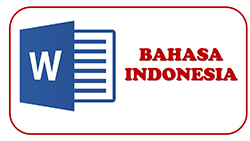Rights and Obligations of Children With Special Needs in Islamic Religious Education: A Study of Tarbawi Hadith
Abstract
Inclusive education in Islamic Religious Education is an important element in providing equal opportunities for Children with Special Needs. This research analyzes the rights and obligations of Children with Special Needs in Islamic Religious Education (IRE) through the perspective of educational hadiths. With a qualitative approach based on literature study, this research examines the principle of inclusivity reflected in the Prophet's hadiths, including the story of Julaibib. Data were analyzed using the Miles and Huberman method (data reduction, data presentation, and conclusion drawing). The research results show that the value of inclusivity in tarbawi hadith emphasizes equal rights to education for children with special needs, the importance of adaptive learning methods, and the role of teachers and the community in supporting inclusive education. The implications of this research emphasize the need for educator training and a curriculum based on Islamic values that appreciate diversity.
Downloads
References
Ainscow, M. (2005). Developing inclusive education systems: what are the levers for change? Journal of Educational Change, 6(2), 109–124. https://doi.org/10.1007/s10833-005-1298-4
Ainscow, M. (2020). Promoting inclusion and equity in education: lessons from international experiences. Nordic Journal of Studies in Educational Policy, 6(1), 7–16. https://doi.org/10.1080/20020317.2020.1729587
Ainscow, M., & Miles, S. (2008). Making Education for All inclusive: where next? PROSPECTS, 38(1), 15–34. https://doi.org/10.1007/s11125-008-9055-0
Alnahdi, G. (2020). Are We Ready for Inclusion? Teachers’ Perceived Self-Efficacy for Inclusive Education in Saudi Arabia. International Journal of Disability, Development and Education, 67(2), 182–193. https://doi.org/10.1080/1034912X.2019.1634795
Astuti, R. F., & Putri, K. A. (2024). Peran Pendidikan Inklusif: Strategi dan Tantangan dalam Penghapusan Diskriminasi terhadap Anak-Anak Berkebutuhan Khusus. Jurnal Pendidikan Kebutuhan Khusus, 8(2), 109–119. https://doi.org/https://doi.org/10.24036/jpkk.v8i2.926
Banks, J. A., & Banks, C. A. M. (1997). Multicultural education : issues and perspectives. Allyn and Bacon.
Booth, T., Simón, C., Sandoval, M., Echeita, G., & Muñoz, Y. (2015). Index for inclusion. Developing learning and participation in schools: New revised and expanded edition. Red Iberoamericana de Investigación Sobre Cambio y Eficacia Escolar (RINACE), 13(3), 519.
br Tarigan, I. W., Saragih, E., Ritonga, A. A., & Darlis, A. (2024). Pendidikan Inklusif dalam Persfektif Al-Qur’an. Jurnal Pendidikan Tambusai, 8(1), 2623–2635.
Bronfenbrener, U. (1996). The ecology of human development [electronic resource] : experiments by nature and design. Harvard University Press.
Darmiah, B. (2024). Implementasi Profil Pelajar Rahmatan Lil’Alamin Pada Mata Pelajaran PAI. Jurnal Ilmu Tarbiyah Dan Keguruan, 2(2), 318–327.
Deci, E. L., & Ryan, R. M. (2000). The “What” and “Why” of Goal Pursuits: Human Needs and the Self-Determination of Behavior. Psychological Inquiry, 11(4), 227–268. https://doi.org/10.1207/S15327965PLI1104_01
Degener, T. (2014). A human rights model of disability. Routledge Handbook of Disability Law and Human Rights.
Dewi, F., Al Farabi, M., & Darlis, A. (2023). Pendidikan Inklusi dalam Al-Qur’an Berdasarkan Surat ‘Abasa Ayat 1-11. El-Afkar: Jurnal Pemikiran Keislaman Dan Tafsir Hadis, 12(1), 134–152. https://doi.org/http://dx.doi.org/10.29300/jpkth.v12i1.3032
Fatmawati, E. (2020). Kerjasama Orang Tua dan Guru Dalam Meningkatkan Motivasi Belajar Peserta Didik. Ibtida', 1(2), 135-150.
Florian, L., & Beaton, M. (2018). Inclusive pedagogy in action: getting it right for every child. International Journal of Inclusive Education, 22(8), 870–884. https://doi.org/10.1080/13603116.2017.1412513
Florian, L., & Black-Hawkins, K. (2011). Exploring inclusive pedagogy. British Educational Research Journal, 37(5), 813–828. https://doi.org/10.1080/01411926.2010.501096
Göransson, K., & Nilholm, C. (2014). Conceptual diversities and empirical shortcomings – a critical analysis of research on inclusive education. European Journal of Special Needs Education, 29(3), 265–280. https://doi.org/10.1080/08856257.2014.933545
Ifah, A., Nasution, U. N., Ritonga, A. A., & Al Farabi, M. (2024). Pendidikan Inklusi dalam Al-Qur’an QS Abasa Ayat 1-11. Tarbiatuna: Journal of Islamic Education Studies, 4(2), 462–473. https://doi.org/https://doi.org/10.47467/tarbiatuna.v4i2.6329
Khaerunisa, H. (2023). Pembelajaran Inklusif: Membangun Kesetaraan di Dalam Kelas pada Masa Pencabutan PPKM. Karimah Tauhid, 2(5), 2234–2244. https://doi.org/https://doi.org/10.30997/karimahtauhid.v2i5.9641
Mastainah, Saukani, & Mardhatillah, L. (2023). Titik Singgung Pendidikan Agama Islam dengan Paradigma Pendidikan Inklusi (Anak Berkebutuhan Khusus). Jurnal Religion: Jurnal Agama, Sosial, Dan Budaya, 1(5), 589–610. https://doi.org/https://doi.org/10.55606/religion.v1i5.296
Miles, M. B., & Huberman, A. M. (1994). Qualitative Data Analysis: An Expanded Sourcebook. Sage Publications.
Mitchell, D., & Sutherland, D. (2020). What Really Works in Special and Inclusive Education. Routledge. https://doi.org/10.4324/9780429401923
Muhibban, M. (2023). Hak dan Kewajiban Difabel dalam Islam (Studi Kesetaraan Sosial dalam Pendidikan dan Muamalah). Journal of Disability Studies and Research (JDSR), 2(1), 1–11. https://doi.org/https://doi.org/10.30631/jdsr.v2i1.1680
Saputra, A. (2016). Kebijakan Pemerintah terhadap Pendidikan Inklusif. GOLDEN AGE: Jurnal Ilmiah Tumbuh Kembang Anak Usia Dini, 1(3), 1–14.
Munawir, M., Bilqhis, R. P., & Mahmudah, R. (2024). Peran Pendidikan Islam dalam Meningkatkan Kesadaran tentang Pendidikan Inklusif. Jurnal Basicedu, 8(2), 1140–1148.
Musyarrofah, I. L. (2025). Peran Pembelajaran Aktif dalam Meningkatkan Pemahaman Materi PAI. Al-Tarbiyah: Jurnal Ilmu Pendidikan Islam, 3(1), 175–187. https://doi.org/https://doi.org/10.59059/al-tarbiyah.v3i1.1953
Ní Bhroin, Ó., & King, F. (2020). Teacher education for inclusive education: a framework for developing collaboration for the inclusion of students with support plans. European Journal of Teacher Education, 43(1), 38–63. https://doi.org/10.1080/02619768.2019.1691993
Nuurtanty, O., & Muadin, A. (2024). Solusi Model Pendidikan Islam Bagi Anak Berkebutuhan Khusus di Sekolah Inklusif. Madinah: Jurnal Studi Islam, 11(1), 23–36. https://doi.org/https://doi.org/10.58518/madinah.v11i1.2448
Pangayom, A. E., Septianingsih, M. A., & Rohmah, A. A. (2024). Strategi Guru Pendamping untuk Mendorong Interaksi Sosial Anak Berkebutuhan Khusus di Kelas Reguler. Satya Widya, 40(2), 128–142. https://doi.org/https://doi.org/10.24246/j.sw.2024.v40.i2.p128-142
Parnawi, A., & Syahrani, M. (2024). Pendidikan Inklusif dalam Islam Untuk Membangun Kesetaraan dan Keadilan. Arriyadhah, 21(1), 79–87.
Peters, S. J. (2003). Inclusive education: Achieving education for all by including those with disabilities and special education needs. International Review of Education, 1(1), 1–133.
Rahmi, A., & Muqowim, M. (2022). Penyelenggaraan Pendidikan Inklusif pada Madrasah di Sumatera Barat. Ranah Research: Journal of Multidisciplinary Research and Development, 4(2), 112–122.
Rawls, J. (1971). A theory of justice. Belknap Press of Harvard University Press.
Rifqi, S., Putra, J. M., Ahmad, A. T., Widayanthi, D. G. C., Abdullah, G., Sunardi, S., & Syathroh, I. L. (2024). Pendidikan Yang Menginspirasi: Mengasah Potensi Individu. Yayasan Literasi Sains Indonesia
Rohmawati, D., Nisa, R., & Hasyim, H. (2023). Gaya Mengajar Guru dalam Meningkatkan Hasil Belajar Kognitif pada Mata Pelajaran Fiqih Kelas II Madrasah Ibtidaiyah. Ibtida’, 4(01), 78-89. https://doi.org/10.37850/ibtida’.v4i01.478
Rogers, C. (1969). Freedom to Learn. Merrill.
Rose, D., Meyer, A., & Gordon, D. (2013). Universal Design for Learning: Theory and practice.
Rosyid, A. (2020). Implementasi Pembelajaran PAI dalam Pendidikan Inklusi (Studi Multisitus di SMAN 1 Gedangan dan SMAN 4 Sidoarjo). Universitas Islam Negeri Sunan Ampel.
Sari, N. (2024). Prinsip-Prinsip Dasar Pendidikan Anak Berkebutuhan Khusus. Sada Kurnia Pustaka.
Sharma, U., Loreman, T., & Forlin, C. (2012). Measuring teacher efficacy to implement inclusive practices. Journal of Research in Special Educational Needs, 12(1), 12–21. https://doi.org/10.1111/j.1471-3802.2011.01200.x
Siddikki, A. (2023). Hak Dan Kewajiban dan Eksitensi Kaum Difabel Perspektif Tafsir Al-Qur’an. Universitas Islam Negeri Sultan Syarif Kasim.
Slee, R. (2011). The Irregular School. Routledge. https://doi.org/10.4324/9780203831564
Sugiyono. (2017). Metode Penelitian Kuantitatif, Kualitatif, dan R&D. Alfabeta.
Sumantri, B. A. (2020). Pendidikan Inklusif dalam Surat al-Hujurat Ayat 10-13 dan Surat Abasa Ayat 1-10. The Indonesian Conference on Disability Studies and Inclusive Education, 1, 125–140.
Sumarna, E., Parhan, M., Abdurrahman, M., Jenuri, J., Subakti, G. E., & Zubir, Z. (2022). People with special needs in religious literacy. Revista Iberoamericana de Psicología Del Ejercicio y El Deporte, 17(1), 13–17.
Tomlinson, C. A. (2017). How to differentiate instruction in academically diverse classrooms (Vol. 3). ASCD.
UNESCO. (1994). The Salamanca Statement and Framework for Action on Special Needs Education. World Conference on Special Needs Education: Access and Quality, Salamanca, Spain.
Vygotsky, L. S. (1978). Mind in Society: The Development of Higher Psychological Processes. Harvard University Press.





.png)










